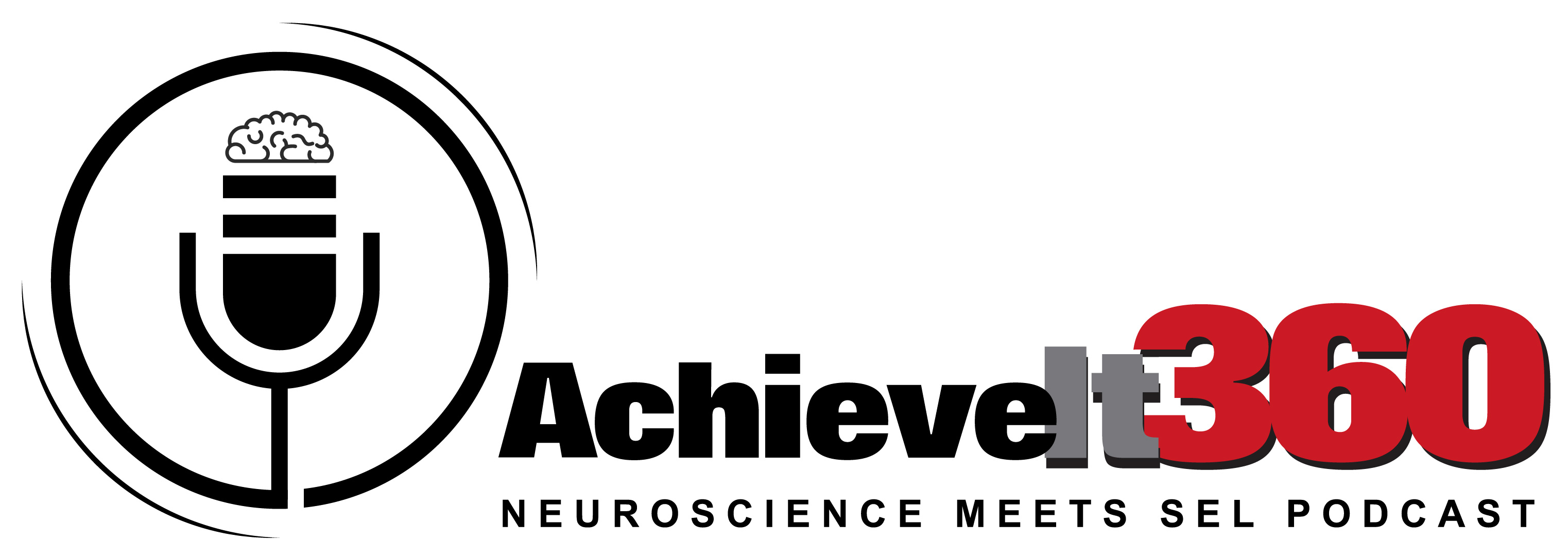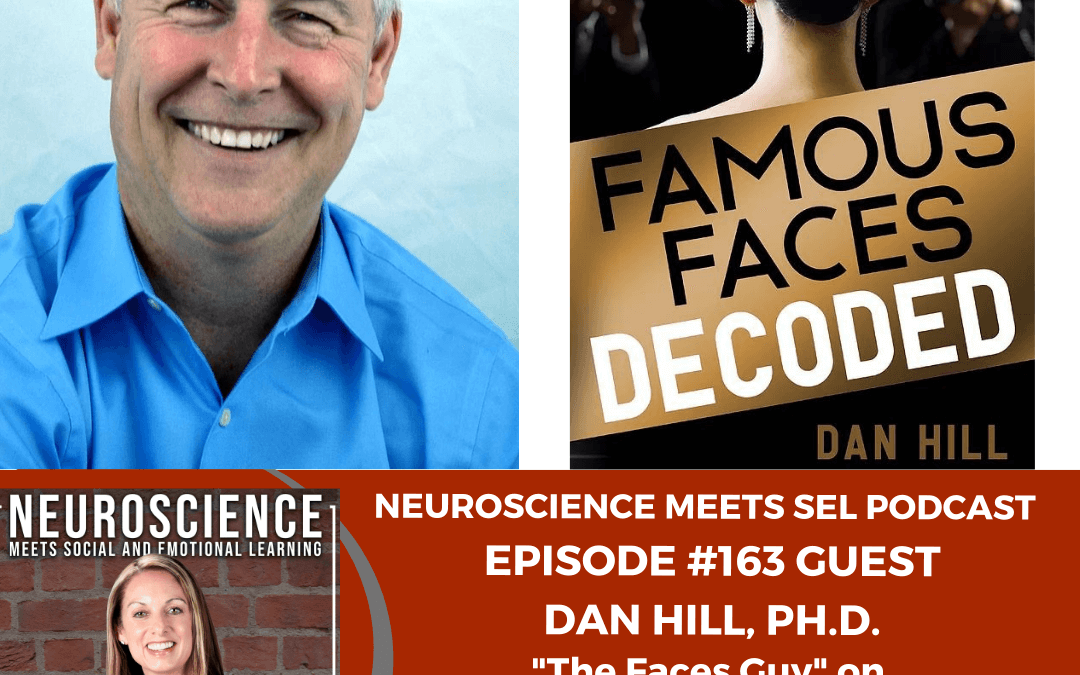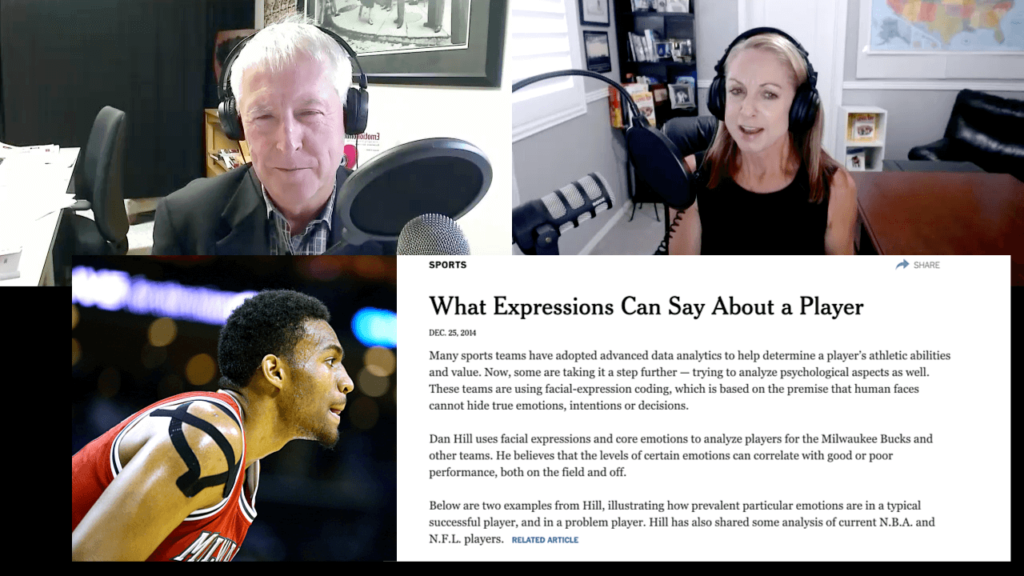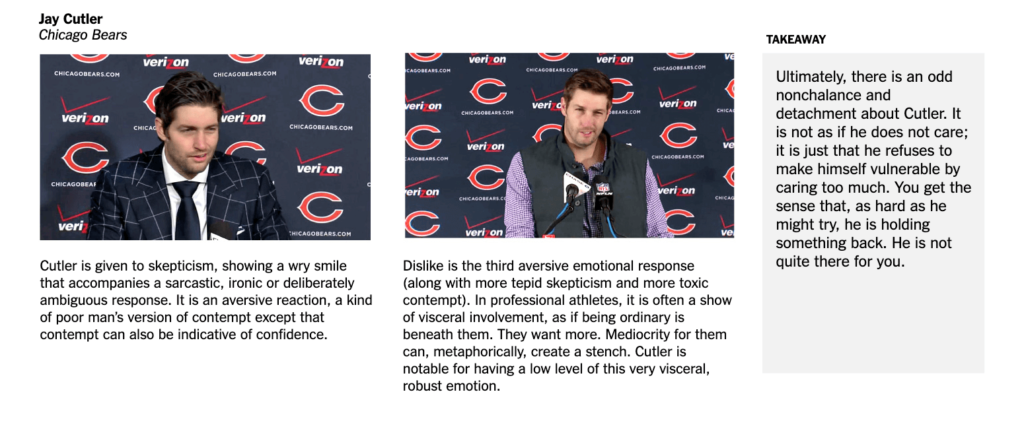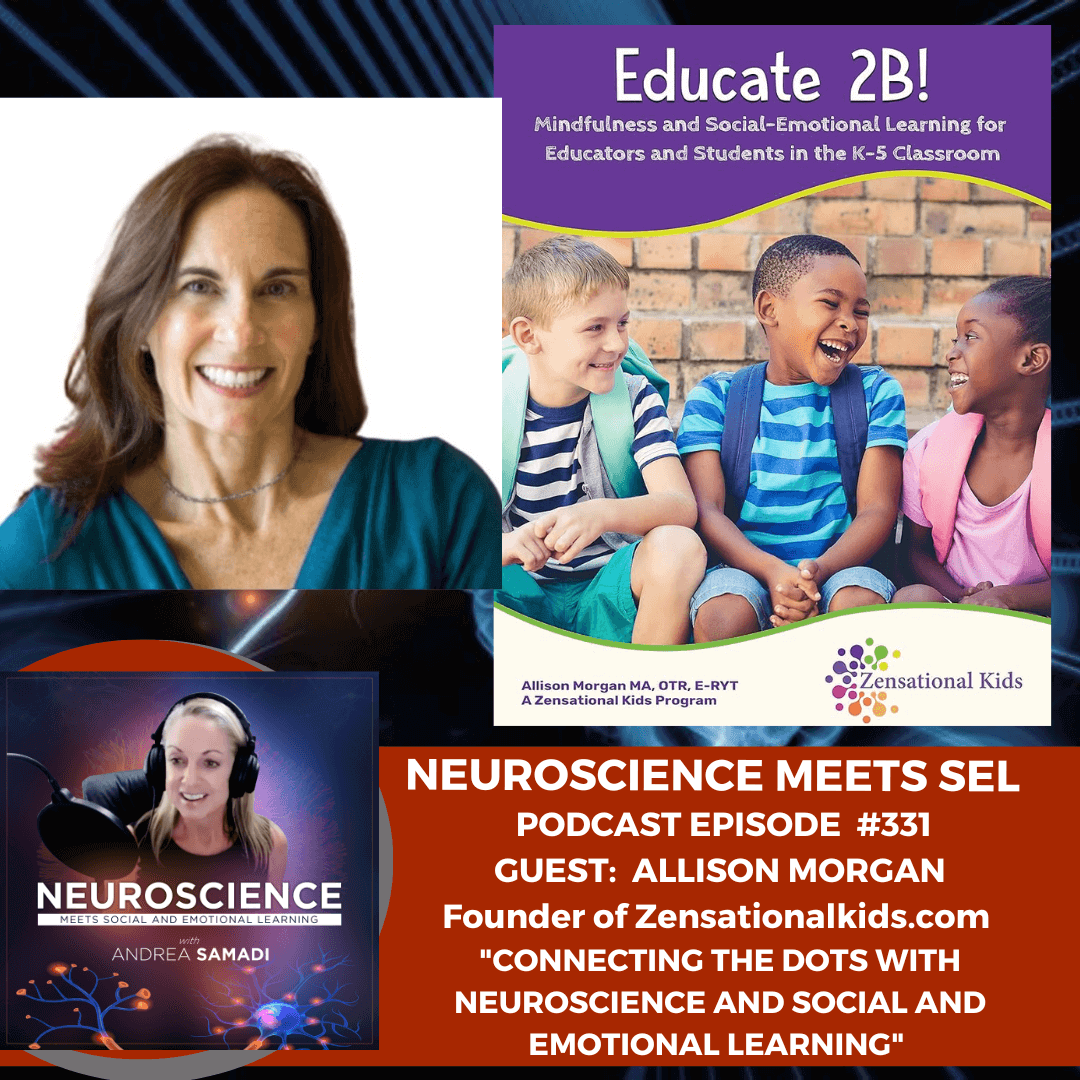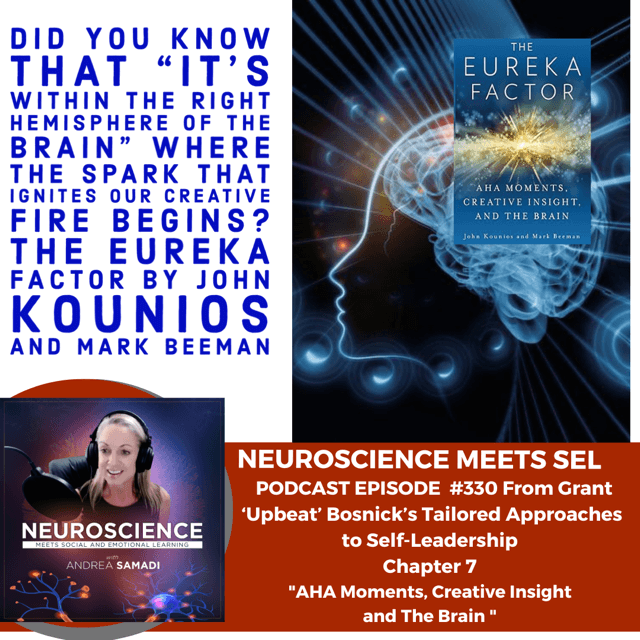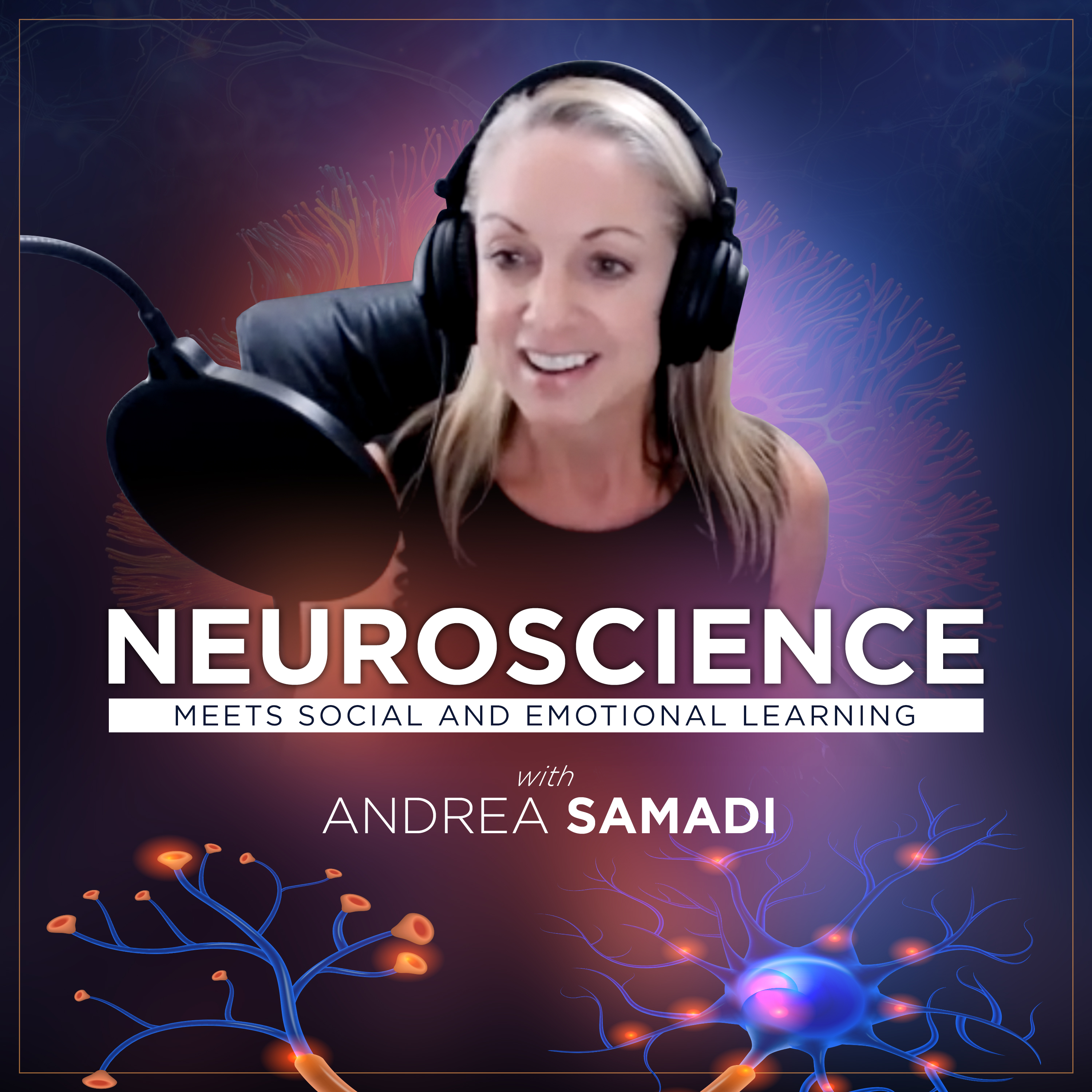Welcome back to the Neuroscience Meets Social and Emotional Learning Podcast EPISODE #163 with Dr. Dan Hill, Ph.D. an internationally recognized expert on the role of emotions in politics, business, sports and pop culture, who has spoken to audiences in over 25 countries. There are two currencies in life, he says, “There’s dollars and emotions.” For over 20 years now, Dan has specialized in the latter – often in terms of business applications, and often by analyzing facial expressions because he asserts “the most valuable 25 square inches of visual territory on earth runs from the eyebrows to the mouth.” There, people best reveal and communicate the affective responses that so often drive their behavior, whether in the marketplace, the workplace, their personal lives, or in realms like politics, and sports.
Watch the interview on YouTube here.https://youtu.be/fT_SNrZM6rA
Learn more about Dr. Dan Hill https://www.sensorylogic.com/
See past Neuroscience Meets Social and Emotional Learning Podcast Episodes https://www.achieveit360.com/episodes/
In Today’s Episode, you will learn:
✔︎ How to use facial coding to improve your results in your personal and professional life.
✔︎ Examples of how Dr. Hill used this skill in professional sports and in the classroom.
✔︎ The origins of facial coding beginning with Leonardo da Vinci, Darwin, Duchenne and Dr. Ekman.
✔︎ How Dr. Hill discovered this tool and how he has used it to build a successful career.
✔︎ Theory of Mind and Facial Coding–what emotion he stays away from.
✔︎ Our future leaders–What emotions will make them successful.
If you want to be more successful in life, happier in your marriage, be an expert at handling your kids, a better manager at work, a more effective coach in sports, a better hiring manager, close more sales, or negotiate a better deal for yourself, an understanding of how to read someone else’s facial expressions is imperative.
To capture and quantify emotions, Dan pioneered the use of facial coding (the analysis of facial expressions) in market research starting in 1998 and his company, Sensory Logic, Inc[i]., has done work for over half of the world’s top 100 consumer oriented, B2C companies. Dan has received seven U.S. patents related to facial coding and is also a certified Facial Action Coding System (FACS) practitioner[ii], which is a popular course, offered by someone I have studied in depth, Paul Ekman[iii] who’s a well-known psychologist and co-discoverer of micro expressions. Dr. Ekman was named one of the 100 most influential people in the world by TIME Magazine[iv] in 2009, has worked with many government agencies, domestic and abroad and has compiled over 50 years of his research to create comprehensive training tools to read the hidden emotions of those around you and believes we can all improve our ability to do this, with training[v] and Dan Hill has this training.
IMAGE SOURCE: The New York Times November 18, 2014 https://nyti.ms/3nCE7co
I’m Andrea Samadi, author, and educator from Toronto, Canada, now in Arizona, and like many of our listeners, have been fascinated with learning and understanding the science behind high performance strategies that we can use to improve our own productivity in our schools, our sports, and workplace environments. My vision is to bring the experts to you, share their books, resources, and ideas to help you to implement their proven strategies, whether you are a teacher working in the classroom or online, a student, or parent working in the corporate space.
Our guest for this week’s podcast, Dan Hill, whose latest books consist of Famous Faces Decoded: A Guidebook for Reading Others;[vi] Two Cheers for Democracy: How Emotions Drive Leadership Style[vii]; and First Blush: People’s Intuitive Reactions to Famous Art[viii] will help us to take a deep dive into understanding why we need to be able to read the emotions in others. His earlier, business books include: About Face: The Secrets of Emotionally Effective Advertising[ix]; and Emotionomics: Leveraging Emotions for Business Success, which features a foreword by Sam Simon, co-creator of The Simpsons. He has a NEW book that was just released on AMAZON yesterday, Blah, Blah, Blah: A Snarky Guide to Office Lingo[x] that is a humorous take on how the workplace really operates and the fact that there’s a little truth in every joke. Dan Hill is also the host of the EQ Spotlight Podcast[xi] where he has discussions with thought leaders about the importance of emotions in politics, culture and life.
In 2014, Dan received front-page coverage in The New York Times for his work with professional and NCAA Division 1 sports teams. Other media coverage has ranged from TV appearances on ABC’s “Good Morning America,” Bloomberg TV, CNBC, CNN, C-Span, ESPN, Fox, “The Today Show,” PBS, and so many others that I will link in the show notes.
The Tennis Channel, to print and digital coverage in Allure, China Forbes, Cosmopolitan, Fast Company, The Financial Times, The Los Angeles Times, Politico, Time, USA Today, and The Wall Street Journal. Dan was educated at St. Olaf College, Oxford University, Brown University, and Rutgers University. Along with his wife, Karen Bernthal, he nowadays splits his time between St. Paul, Minnesota and Palm Desert, California.
I am very grateful for the fact that this podcast allows me to learn from some of the top leaders in the world on improving productivity and results. Sometimes, while preparing for interviews, I step back and just notice how lucky I am to be able to speak directly with these world leaders, that I have the chance to learn from them, and share their knowledge with you. As I am researching, and meeting new people, you had better believe I’m also applying what I’m learning to my own life. This way, it’s like we are learning together. I will never take this learning opportunity for granted. I met Dan Hill, through Twitter, where he reached out to me, sharing his work and as I read his BIO I knew immediately that had to have him on the podcast to share his work with facing coding to help us to all understand how to read the emotions of others in our schools, sports environments and workplaces. This is a valuable skill that Dr. Paul Ekman believes we can all develop to help us to deal with what’s important in our life, without having to take the time to “think” about it. With practice, we should all be able to use this skill to just “know” the best way to proceed.
Let’s meet Dan Hill and learn more about facial coding—what is it, and how can we use it in our own lives!
Welcome Dan Hill, thank you for joining me on the podcast today.
I have many questions for you but have to say that when we first met on Twitter, I recognized immediately that we needed to speak and it was a mix between the fact that I have been studying Dr. Eckman’s work on understanding emotions, and the fact that you have been applying this for the past 20 years, successfully in many different sectors. I’m beyond excited to learn more from you on this topic.
INTRO QUESTION: In your BIO, it mentions your front-page coverage in the New York Times for your work with professional and NCAA Division 1 sports teams and I had to look it up. I found the article “What Expressions Can Say About a Player”[xii] (Dec. 25, 2014) and Team’s Turn to a Face Reader Looking for That Winning Smile (Dec. 25, 2014)[xiii] and wonder how did you use this skill to analyze sports players to profile a successful vs problem or non-coachable player? I know there are entire courses on this subject, but what should we all know about this skill, and how we can use it to improve how we interact, teach or coach others?
IMAGE SOURCE: The New York Times December 25, 2014 https://www.nytimes.com/interactive/2014/12/26/sports/NBA-faces-data.html
-
- I first heard about this idea of facing coding or reading emotions through facial expressions through Dr. Eckman’s work, and then through Dr. John Medina where he mentioned Theory of Mind in our interview. What are the origins of facial coding (Da Vinci, Darwin, Duchenne, Ekman)
How did you discover this tool? Would you say you have a particular aptitude for facial coding? How hard is it for people to learn this skill? I know that intuition must play a role here, but how accurate is this process?
I first mentioned Theory of Mind (where we can analyze and infer other people’s behaviors) on this podcast on episode #46[xiv]. Is facial coding like Theory of Mind?
For educators in the classroom, can you suggest a couple of tips for helping them to understand their students better? (as you’ve taught college and also given many speeches)?
What final thoughts do you think would be important for us all to take away with using facial coding in our schools, sports and workplaces?
Thank you very much Dan for your time, research, and strategies for us to all use and implement to become better at recognizing emotions in others, as well as ourselves. I know that American psychologist Dr. Paul Ekman would agree with you that this is a skill that we should all understand so that we can deal with what’s important in our life, quickly, with confidence, with this new understanding. For people who want to learn more about you, is the best place your website? What is your new book that you have coming out this week?
Thank you Dan!!
FOLLOW DR. DAN HILL
https://twitter.com/EmotionsWizard
https://www.linkedin.com/in/dan-hill-emotionswizard/
FOLLOW ANDREA SAMADI:
YouTube Channel: https://www.youtube.com/c/AndreaSamadi
Website https://www.achieveit360.com/
LinkedIn: https://www.linkedin.com/in/samadi/
Facebook: https://www.facebook.com/Achieveit360com
Neuroscience Meets SEL Facebook Group https://www.facebook.com/groups/2975814899101697
Twitter: https://twitter.com/andreasamadi
Instagram: https://www.instagram.com/andreasamadi/
RESOURCES:
Famous Faces Decoded Book Synopsis https://www.facebook.com/watch/?v=2271229932979186
https://en.wikipedia.org/wiki/Andrew_Wiggins
Bucks, Young and Rebuilding, Look to Jabari Parker to Lead the Way Back Nov. 18, 2014 by Ben Strauss https://www.nytimes.com/2014/11/19/sports/basketball/bucks-young-and-rebuilding-look-to-jabari-parker-to-lead-the-way-back.html?.?mc=aud_dev&ad-keywords=auddevgate&gclid=Cj0KCQjwkIGKBhCxARIsAINMioIUDGbdwkIAhb0IkjA2e2h35wD1swCkBjWjZlUScglN6Hmt3iipwiMaAln_EALw_wcB&gclsrc=aw.ds
Dr. Paul Ekman’s FACS Training
https://www.paulekman.com/facial-action-coding-system/
Paul Ekman Image Reference https://www.pinterest.com/pin/455074737331481340/ and Research https://www.ekmaninternational.com/a-brief-history-into-paul-ekmans-early-research/
Early Origins of Facial Coding
https://en.wikipedia.org/wiki/Michelangelo
https://en.wikipedia.org/wiki/Leonardo_da_Vinci
https://en.wikipedia.org/wiki/Duchenne_de_Boulogne
https://en.wikipedia.org/wiki/Charles_Darwin
https://www.paulekman.com/about/paul-ekman/
Mona Lisa’s Smile is Not Genuine June 3, 2019 by St. George’s University of London https://neurosciencenews.com/mona-lisa-smile-14150/
The Science of Genuine Smiles December 6th, 2017 by Alina Lukashevsky https://www.huffpost.com/entry/the-science-behind-smiles_b_9448650
The Duchenne Smile https://www.researchgate.net/figure/The-Duchenne-smile-left-versus-the-social-smile-right-Social-smiles-use-only-the_fig4_337322714
https://www.gottman.com/about/research/couples/
REFERENCES:
[i] https://www.sensorylogic.com/
[ii] https://www.paulekman.com/facial-action-coding-system/
[iii] https://www.paulekman.com/amp/
[iv] http://content.time.com/time/specials/packages/completelist/0,29569,1894410,00.html
[v] Paul Ekman: useful Things to Know About Emotions Published on YouTube Feb. 23, 2012 https://www.youtube.com/watch?v=vdUZQmZfMzY
[vi]Famous Faces Decoded by Dan Hill https://www.sensorylogic.com/famous-faces
[vii] Two Cheers for Democracy: How Emotions Drive Leadership Style by Dan Hill June 18, 2019 https://www.amazon.com/Two-Cheers-Democracy-Emotions-Leadership/dp/0999741624
[viii] First Blush: People’s Intuitive Reactions to Famous Art by Dan Hill October 1, 2019 https://www.amazon.com/First-Blush-Peoples-Intuitive-Reactions/dp/0999741632/ref=sr_1_1?dchild=1&keywords=first+blush&qid=1631455388&s=books&sr=1-1
[ix] About Face: The Secrets of Emotionally Effective Advertising by Dan Hill October 1, 2010 https://www.amazon.com/About-Face-Emotionally-Effective-Advertising/dp/0749457570/ref=sr_1_3?dchild=1&keywords=about+face+dan+hill&qid=1631455553&s=books&sr=1-3
[x] Blah, Blah, Blah: A Snarky Guide to Office Lingo by Dan Hill and Howard Moskowitz September 2021 https://www.amazon.com/Blah-Snarky-Guide-Office-Lingo-ebook/dp/B09BWPQGGJ
[xi] Dan Hill’s EQ Spotlight Podcast https://podcasts.apple.com/us/podcast/dan-hills-eq-spotlight/id1519669707
[xii] The New York Times “What Expressions Can Say About a Player” December 25, 2014 https://www.nytimes.com/interactive/2014/12/26/sports/NBA-faces-data.html
[xiii] Teams Turn to a Face Reader, Looking for That Winning Smile by Kevin Randall Dec. 25, 2014 https://www.nytimes.com/2014/12/26/sports/nba-bucks-looking-for-an-edge-hire-expert-in-face-time.html
[xiv] Neuroscience Meets Social and Emotional Learning Podcast EPISODE #46 “As Close to Mind Reading as Brain Science Gets: Developing and Using Theory of Mind in Your Daily Life” https://andreasamadi.podbean.com/e/as-close-to-mind-reading-as-brain-science-gets-developing-and-using-theory-of-mind-in-your-daily-life/
Podcast: Play in new window | Download
Subscribe: Apple Podcasts | RSS
